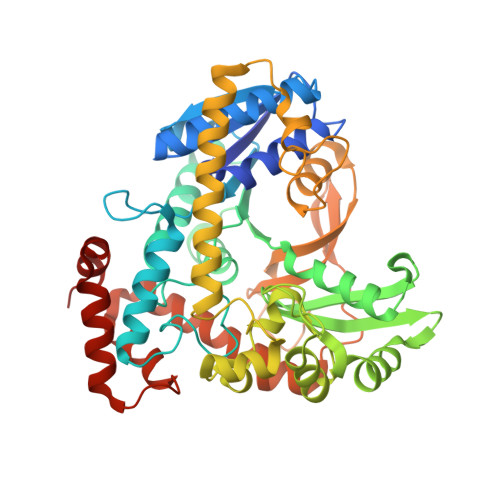Structure of an alpha-glucuronidase in complex with Co2+and citrate provides insights into the mechanism and substrate recognition in the family 4 glycosyl hydrolases.
Mohapatra, S.B., Manoj, N.(2019) Biochem Biophys Res Commun 518: 197-203
- PubMed: 31409483
- DOI: https://doi.org/10.1016/j.bbrc.2019.08.030
- Primary Citation of Related Structures:
6KCX - PubMed Abstract:
Glycosyl hydrolases belonging to the family 4 (GH4) use a unique redox-based NAD + -dependent reaction mechanism involving anionic intermediates and requires a divalent metal ion and reducing conditions for catalytic activity. These enzymes display wide specificity and selectivity for their substrates. However, the structural basis of substrate binding, recognition and specificity remains poorly studied. Here, we report the crystal structure of Thermotoga maritima TmAgu4B, a GH4 α-glucuronidase, in complex with Co 2+ and citrate. Analysis of GH4 structures show that the metal ion is present in a conserved octahedral coordination with conserved side chain atoms, the ligand atoms and an invariant water molecule. The data provides the first structural evidence for a metal-activated hydroxide ion that acts as the general base to deprotonate the C3-hydroxyl group of the glycone, a rate-limiting step in the mechanism. Furthermore, the citrate binding mode in the active site is analogous to a bound glucuronide substrate and provides insights into the mode of substrate interaction with the metal ion, the active site residues and, the structural basis of substrate recognition in a GH4 α-glucuronidase.
- Department of Biotechnology, Bhupat and Jyoti Mehta School of Biosciences, Indian Institute of Technology Madras, Chennai, 600036, India.
Organizational Affiliation:




















